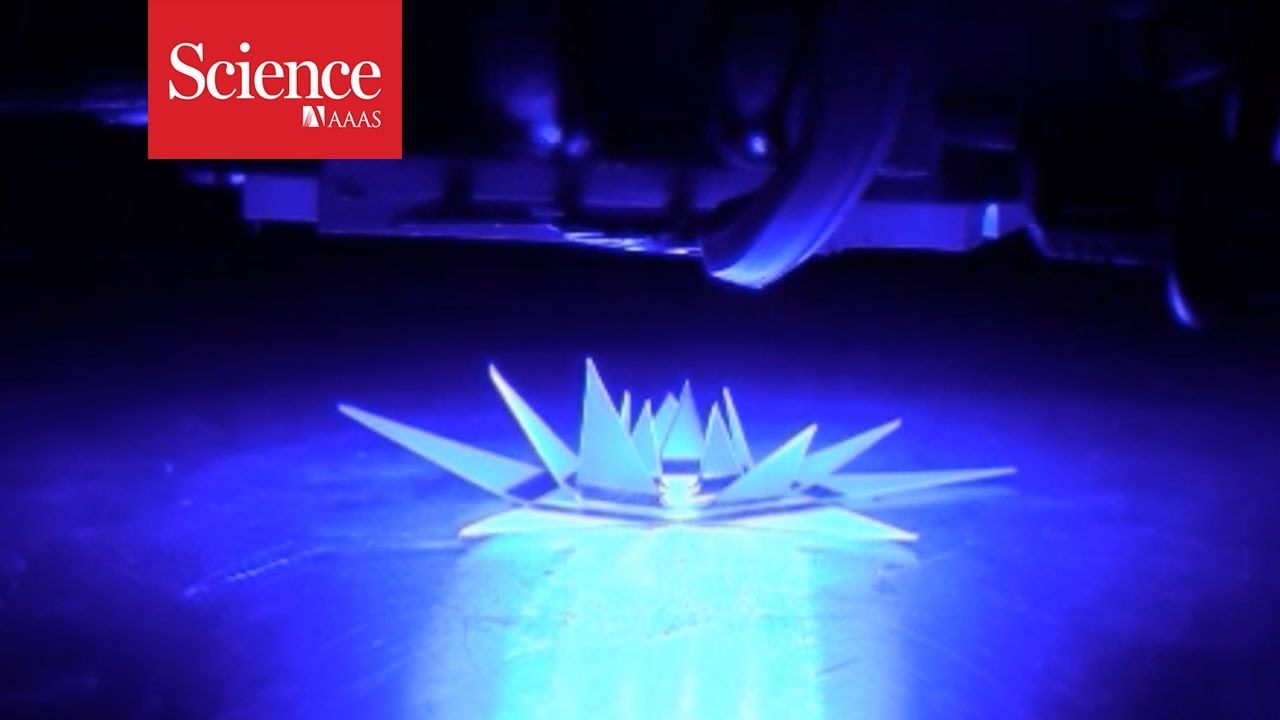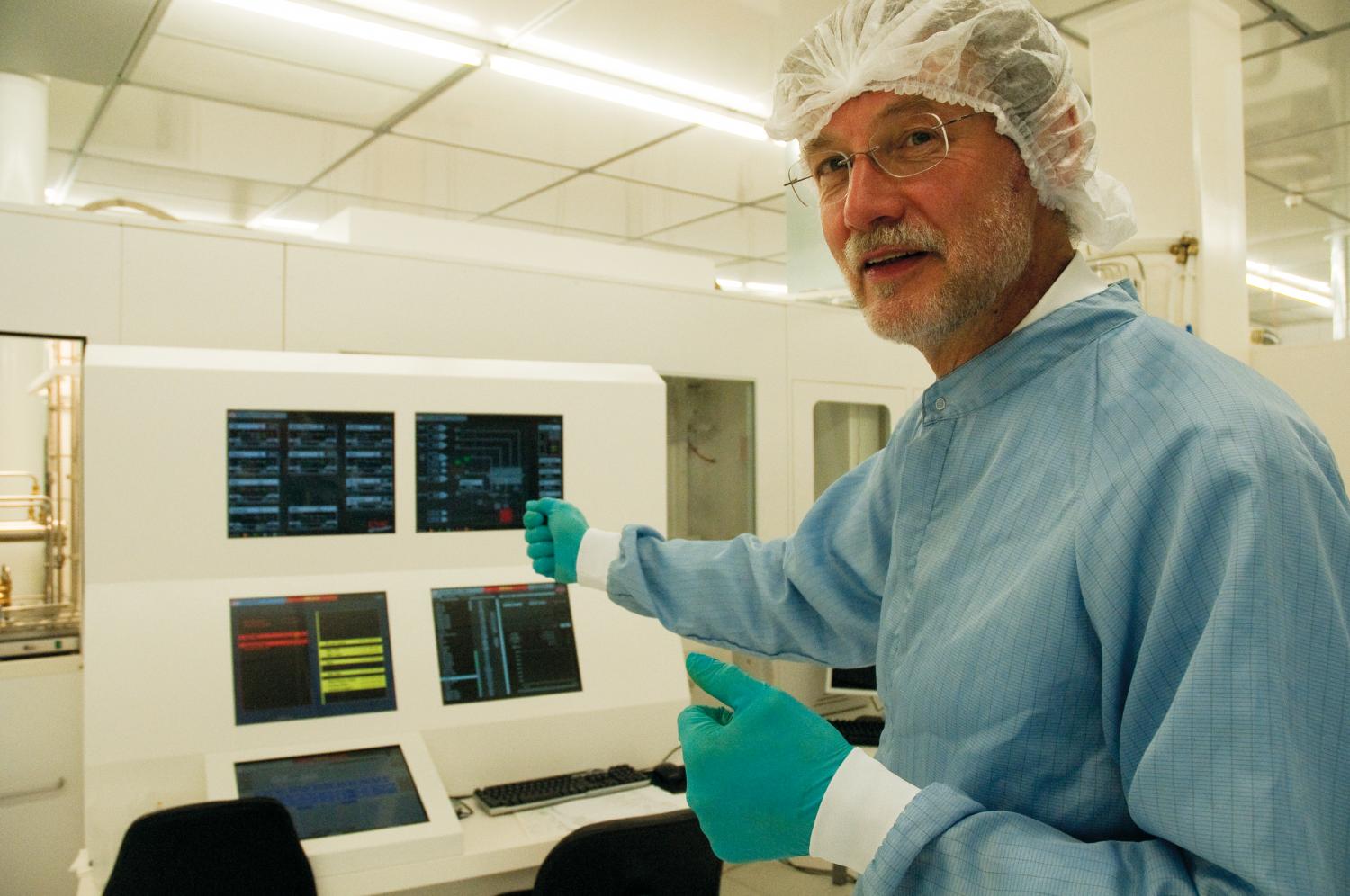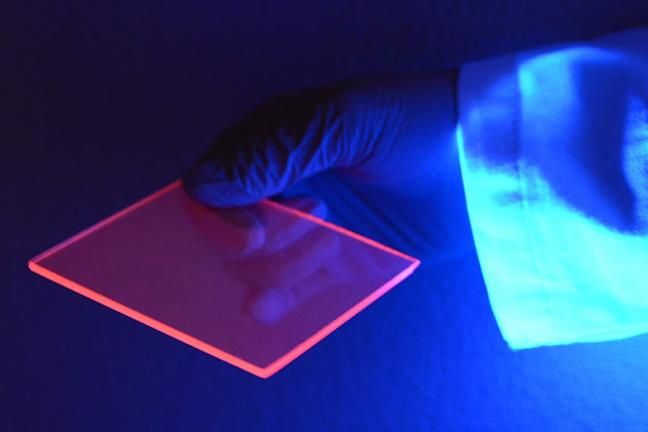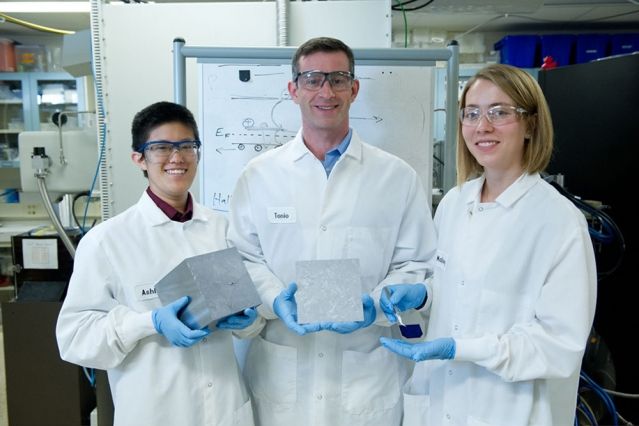Archive for the ‘solar power’ category: Page 117
Mar 21, 2017
The world’s most efficient and environment-friendly solar cells
Posted by Simon Waslander in categories: nanotechnology, solar power, sustainability
In the future, solar cells can become twice as efficient by employing a few smart little nano-tricks.
Researchers are currently developing the environment-friendly solar cells of the future, which will capture twice as much energy as the cells of today. The trick is to combine two different types of solar cells in order to utilize a much greater portion of the sunlight.
“These are going to be the world’s most efficient and environment-friendly solar cells. There are currently solar cells that are certainly just as efficient, but they are both expensive and toxic. Furthermore, the materials in our solar cells are readily available in large quantities on Earth. That is an important point,” says Professor Bengt Svensson of the Department of Physics at the University of Oslo (UiO) and Centre for Materials Science and Nanotechnology (SMN).
Continue reading “The world’s most efficient and environment-friendly solar cells” »
Mar 18, 2017
Trump Should Make Space-Based Solar Power A National Priority
Posted by Bruce Dorminey in categories: solar power, space, sustainability
My take on why the Trump Administration should make space-based solar power a real priority.
Space-based solar power — technology that would harvest solar energy directly in space for use on Earth — is a concept whose time has come.
Mar 15, 2017
These Two Tesla Vets Want to Build the Next ‘Gigafactory’ in Sweden — By Geoffrey Smith | Fortune
Posted by Odette Bohr Dienel in categories: disruptive technology, Elon Musk, solar power

“Two Tesla Motors veterans want to build a European counterpart to Elon Musk’s “gigafactory”, in an effort to stake out a dominant position in the fast-evolving supply chain for makers of electric vehicles.”
Tags: supply chain, supply circle
Mar 10, 2017
The boom is here: U.S. solar experiences record-smashing year — By Joe Romm | ThinkProgress
Posted by Odette Bohr Dienel in categories: engineering, environmental, governance, policy, science, solar power
“The industry reports that, for the first time ever, solar was the number one source of new generating capacity, beating out wind and gas.”
Mar 9, 2017
Tesla Completes Hawaii Storage Project That Sells Solar at Night — By Mark Chediak | Bloomberg
Posted by Odette Bohr Dienel in categories: Elon Musk, energy, solar power, sustainability, transportation
“Tesla Inc. has completed a solar project in Hawaii that incorporates batteries to sell power in the evening, part of a push by the electric car maker to provide more green power to the grid.”
Tag: Tesla
Mar 3, 2017
Researchers remotely control sequence in which 2-D sheets fold into 3D structures
Posted by Saúl Morales Rodriguéz in categories: bioengineering, biotech/medical, nanotechnology, satellites, solar power, sustainability

Inspired by origami, North Carolina State University researchers have found a way to remotely control the order in which a two-dimensional (2-D) sheet folds itself into a three-dimensional (3D) structure.
“A longstanding challenge in the field has been finding a way to control the sequence in which a 2-D sheet will fold itself into a 3D object,” says Michael Dickey, a professor of chemical and biomolecular engineering at NC State and co-corresponding author of a paper describing the work. “And as anyone who has done origami — or folded their laundry—can tell you, the order in which you make the folds can be extremely important.”
Feb 26, 2017
MIT spinout Sistine Solar can print any image on photovoltaic cells
Posted by Karen Hurst in categories: solar power, sustainability

Nice.
MIT researchers have done even better. MIT has spunout a company called Sistine Solar that has developed a technology to print any kind of image on a skin that can be applied on solar panels, which change the appearance of the photovoltaic cells from all angles, without compromising on their capacity to generate electricity. Founded by the Sloan School of Management at MIT, Sistine Solar hopes to increase the adoption of clean energy with solar panels that mimic the surroundings or environment.
Continue reading “MIT spinout Sistine Solar can print any image on photovoltaic cells” »
Feb 26, 2017
Dream of energy-collecting windows is one step closer to reality
Posted by Saúl Morales Rodriguéz in categories: nanotechnology, solar power, sustainability
Researchers at the University of Minnesota and University of Milano-Bicocca are bringing the dream of windows that can efficiently collect solar energy one step closer to reality thanks to high tech silicon nanoparticles.
The researchers developed technology to embed the silicon nanoparticles into what they call efficient luminescent solar concentrators (LSCs). These LSCs are the key element of windows that can efficiently collect solar energy. When light shines through the surface, the useful frequencies of light are trapped inside and concentrated to the edges where small solar cells can be put in place to capture the energy.
The research is published today in Nature Photonics.
Continue reading “Dream of energy-collecting windows is one step closer to reality” »
Feb 25, 2017
Mechanical engineers leading effort to detect defects that reduce efficiency
Posted by Kevin Huang in categories: climatology, economics, government, solar power, sustainability
Gets too advanced for me, but still interesting.
As the world transitions to a low-carbon energy future, near-term, large-scale deployment of solar power will be critical to mitigating climate change by midcentury. Climate scientists estimate that the world will need 10 terawatts (TW) or more of solar power by 2030—at least 50 times the level deployed today. At the MIT Photovoltaics Research Laboratory (PVLab), teams are working both to define what’s needed to get there and to help make it happen. “Our job is to figure out how to reach a minimum of 10 TW in an economically and environmentally sustainable way through technology innovation,” says Tonio Buonassisi, associate professor of mechanical engineering and lab director.
Their analyses outline a daunting challenge. First they calculated the growth rate of solar required to achieve 10 TW by 2030 and the minimum sustainable price that would elicit that growth without help from subsidies. Current technology is clearly not up to the task. “It would take between $1 trillion and $4 trillion of additional debt to just push current technology into the marketplace to do the job, and that’d be hard,” says Buonassisi. So what needs to change?
Continue reading “Mechanical engineers leading effort to detect defects that reduce efficiency” »















